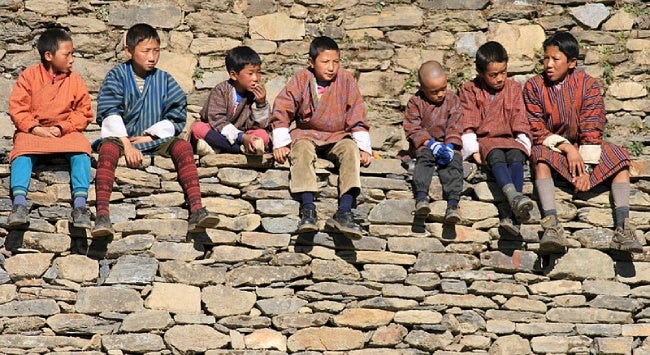Summary
On 13 December 2023, Bhutan officially exited the list of Least Developed Countries (LDCs). The graduation from the LDC status is a monumental achievement for Bhutan. However, it will result in several challenges for the Himalayan kingdom.
After a five-year preparatory period, in line with a United Nations (UN) resolution passed on 13 December 2018, Bhutan officially exited the UN’s list of Least Developed Countries (LDCs) on 13 December 2023. In a resolution titled Graduation of Bhutan from the Least Developed Country Category, passed on 18 December 2023, the UN General Assembly (UNGA) invited bilateral, regional and multilateral development and trading partners to provide full support to the implementation of the country’s 13th National Development Plan and Long-Term Plan spanning up to 2034. The resolution also called for the extension of all international support measures, particularly those relating to trade, as per the Doha Programme of Action, until 13 December 2028.
Bhutan is the seventh country to graduate from the LDC category. The other countries are Botswana (1994), Cabo Verde (2007), the Maldives (2011), Samoa (2014), Equatorial Guinea (2017) and Vanuatu (2020). Following Bhutan’s graduation, there are now 45 LDCs.
Initially conceived in the 1960s, the category of LDCs was officially created by the UNGA in 1971, and Bhutan was included in it because of its poor socio-economic condition at that time. The LDC list is reviewed every three years by the Committee for Development Policy (CDP), which, sends its report to the Economic and Social Council of the UN. After a triennial review of the list, the CDP may recommend to the Council the addition to or graduation of a country from the list. While making such recommendations, the CDP applies three key criteria and thresholds, namely, gross national income per capita; a human asset index; and economic and environmental vulnerability index.
Since the 1980s, Bhutan has achieved an average annual real gross domestic product (GDP) growth of 7.5 per cent, while life expectancy increased from 47 to 68 years. Primary health care covers 95 per cent of the population. Also, it is one of only three carbon-negative nations in the world which absorbs more greenhouse gases than it emits. The other two carbon-negative countries are Suriname and Panama.
Exiting from the LDC is an achievement for the Himalayan kingdom but it also creates multifaceted challenges. First, graduation from the list means changes in market access, loss of LDC-specific aids and reduced policy flexibility. Thimphu could lose benefits such as duty-free and quota-free access to the markets of the developed countries. The LDCs are granted preferential tariff treatment in the markets of developed and developing countries under various schemes and arrangements, such as the Generalized System of Preferences, the trade preferences under the former African, Caribbean and Pacific Group of Countries-European Community, Cotonou Partnership Agreement and other schemes for selected countries. Such facilities will not be available to Bhutan after its graduation.
Second, a changed status may lead to a reduction or withdrawal by some of Bhutan’s traditional development partners whose Overseas Development Assistance plays a significant role in funding projects. After graduation, some economic partners of Bhutan may prefer to offer concessional loans instead of grants. For instance, from time to time, Japan has provided development assistance to Bhutan. In May 2023, the Japan International Cooperation Agency approved a concessional loan to Bhutan to overcome pandemic-related economic troubles. Bhutan had sought a loan of 6,550 million yen (S$5.87 million). The loan was a one-time assistance for a grace period of 10 years at an interest rate of 1.6 per cent.
Third, concessional loans and grants from the World Bank and Asian Development Bank (ADB) to Bhutan could also be affected. Both banks play a key role in Bhutan’s development. For instance, Bhutan became a member of the ADB in 1982 and remained till until mid-2023. Till mid-April 2023, ADB had committed to 234 projects in Bhutan, totalling US$1.2 billion (S$1.6 billion). The ADB’s ongoing sovereign portfolio in Bhutan includes 12 loans and nine grants worth US$350 million (S$470 million).
Fourth, in May 2023, Bhutan formally conveyed its intent to join the World Trade Organization (WTO). Its joining the WTO will impact its small industries which are important for Bhutan in attracting foreign direct investment. Joining the WTO also means compromising on its much-touted gross national happiness and emphasising more on its GDP. Politically, joining the WTO may lead to a decline in traditional Indian influence over the country. Acceding to the WTO means Bhutan will be able to diversify its trading partners. However, Thimphu might want to address New Delhi’s concerns by pursuing economic ties with Beijing, especially as they are already engaged in significant discussions regarding their shared boundaries.
The exit of Bhutan from the LDC list is a monumental development for the small, landlocked country. Now, Thimphu has to take significant economic measures to mitigate the impact of challenges the country may face in the days ahead.
. . . . .
Dr Amit Ranjan is a Research Fellow at the Institute of South Asian Studies (ISAS), an autonomous research institute at the National University of Singapore (NUS). He can be contacted at isasar@nus.edu.sg. The author bears full responsibility for the facts cited and opinions expressed in this paper.
Pic Credit: Wikimedia Commons
-
 More From :
More From :
-
 Tags :
Tags :
-
 Download PDF
Download PDF



